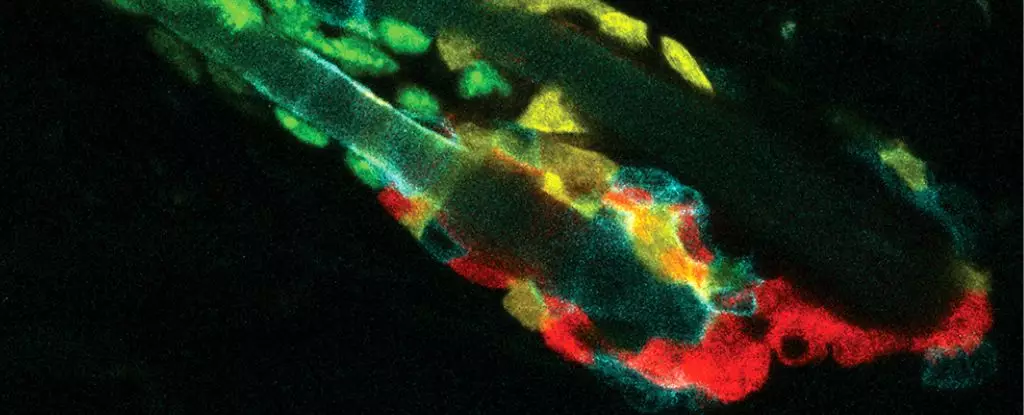In the dynamic environment of the human body, there exists a remarkable paradox: every second, millions of cells undergo the inevitable process of death. This raises an intriguing question about the fate of cellular remnants. Recent research has unveiled an almost cannibalistic method of cellular sanitation, revealing the surprising ways in which living cells engage in cooperation amidst a backdrop of mortality. This breakthrough not only broadens our understanding of cellular behavior but also emphasizes the delicate balance between life and death.
A groundbreaking study conducted by researchers at The Rockefeller University focuses on hair follicle stem cells (HFSCs) in aging mice. Through meticulous experimentation, these scientists discovered that under conditions of widespread cellular death, the HFSCs acted as first responders, consuming the corpses of their deceased neighbors. This revelation upends conventional wisdom surrounding the role of macrophages, which are generally known for their cleanup duties in the immune system. Instead, the HFSCs appeared to initiate the cleanup process, ensuring that the area remains free from dead cells that could disrupt the delicate homeostasis necessary for hair growth and overall skin health.
Katherine Stewart, a cellular biologist leading this research, emphasizes the beauty and efficiency of this mechanism, wherein apathetic debris does not merely linger in the environment, potentially provoking inflammation. By consuming the dead cells, HFSCs seem to play a critical role in preserving the integrity of the stem cell pool necessary for sustaining healthy tissue.
At the heart of this remarkable process is a complex signaling network involving two sensitive receptors located on the surface of HFSCs. These receptors serve a dual purpose: one receptor detects a “find me” lipid signal emitted by degenerate cells, while the other recognizes a growth-promoting substance known as retinoic acid exuded by neighboring healthy cells. When a cell dies, the interplay between these two signals initiates a cleanup protocol, akin to the activation of an emergency response team.
As soon as the dying cells release their chemical cues, the HFSCs are mobilized to commence their scavenging. However, once the debris is cleared and the lipid signal diminishes, the HFSCs must swiftly revert to their primary functions: nurturing the stem cell pool and facilitating hair growth. This tightly regulated mechanism underscores a fundamental principle of biology—the optimization of resources in order to maintain homeostasis.
This study opens avenues for further exploration into the potential universality of this cellular cleanup process in various tissues beyond the dermal environment. The concept of cellular recycling may be a shared strategy across many systems within mammals, suggesting that cells might possess intrinsic capabilities to resolve their own crises without heavy reliance on the immune system. Unraveling this possibility could have profound implications for our understanding of tissue regeneration, wound healing, and aging.
Moreover, the implications of this research extend to therapeutic innovations; by harnessing the principles that govern this cellular cooperation, scientific advancements in regenerative medicine might become more attainable.
As we unravel the complexities of cellular life, we gain insight not only into the mechanisms that preserve life but also into the graceful acceptance of its inevitable end. The synthesis of death and rebirth at the cellular level serves as a poignant reminder of the cyclical nature of existence. Future research must continue to delve into these mechanisms, offering hope and clarity about the body’s enigmatic processes. With every second counting, we remain on the cusp of discovering more about the rich tapestry of life hidden within us.


Leave a Reply